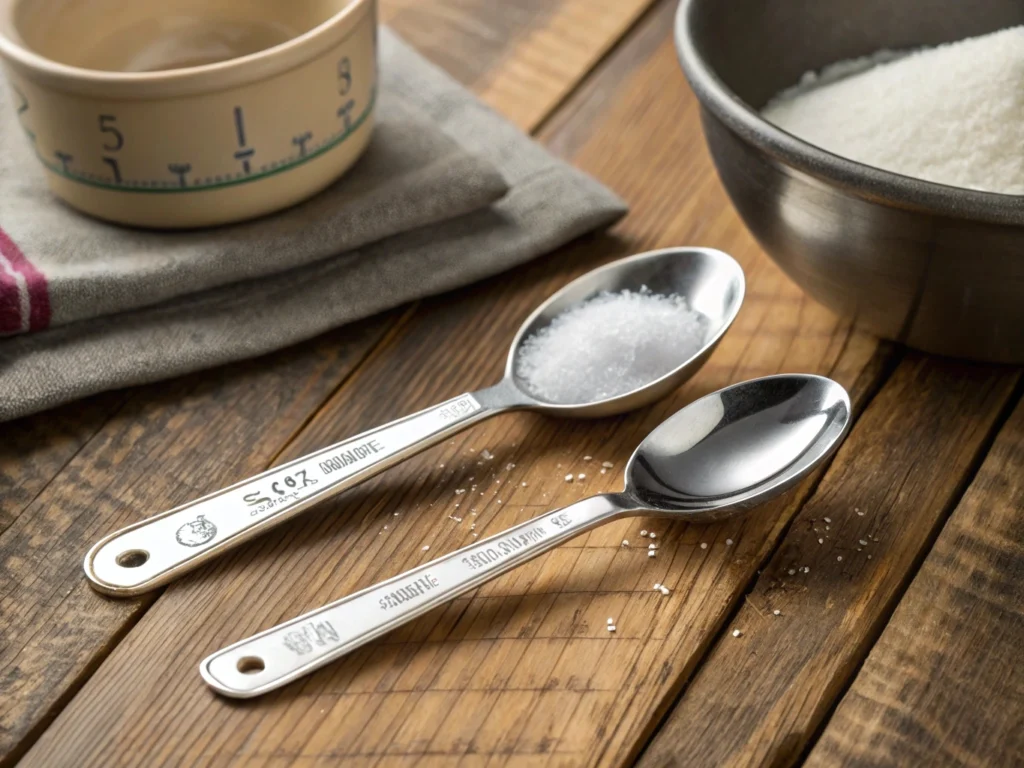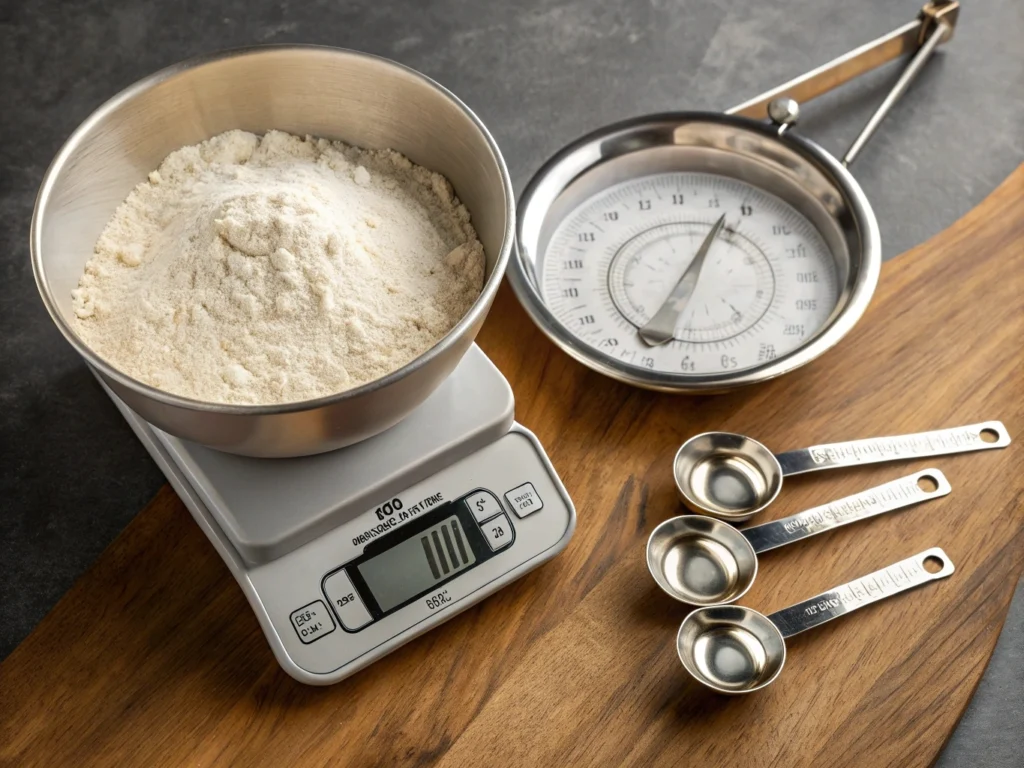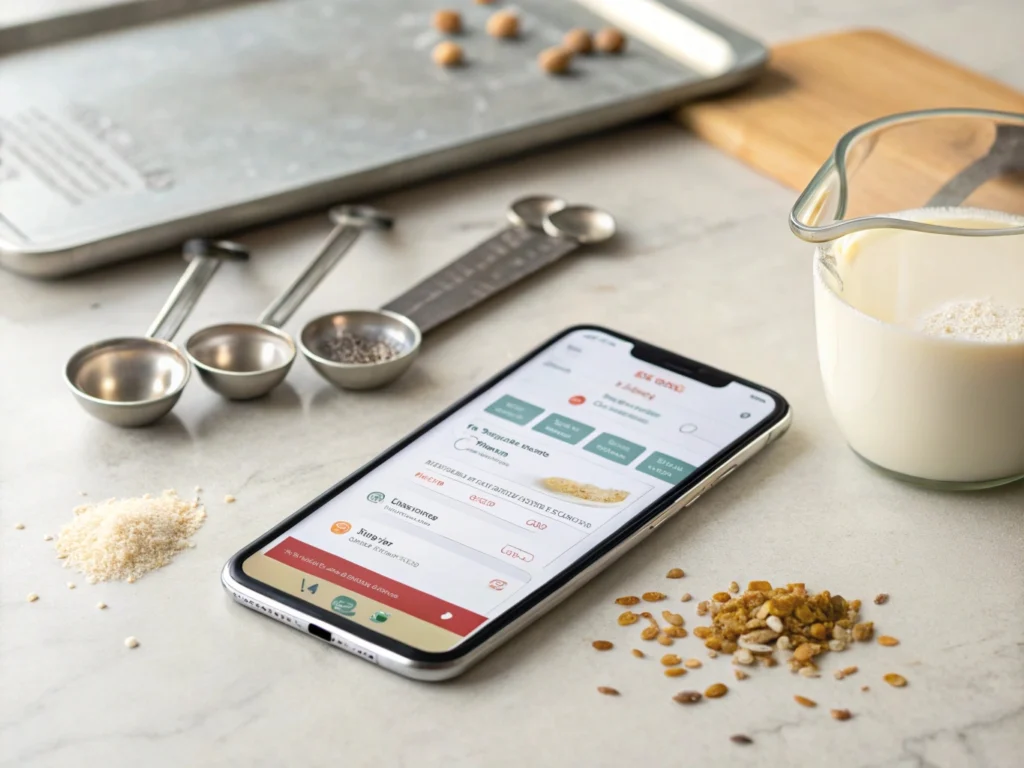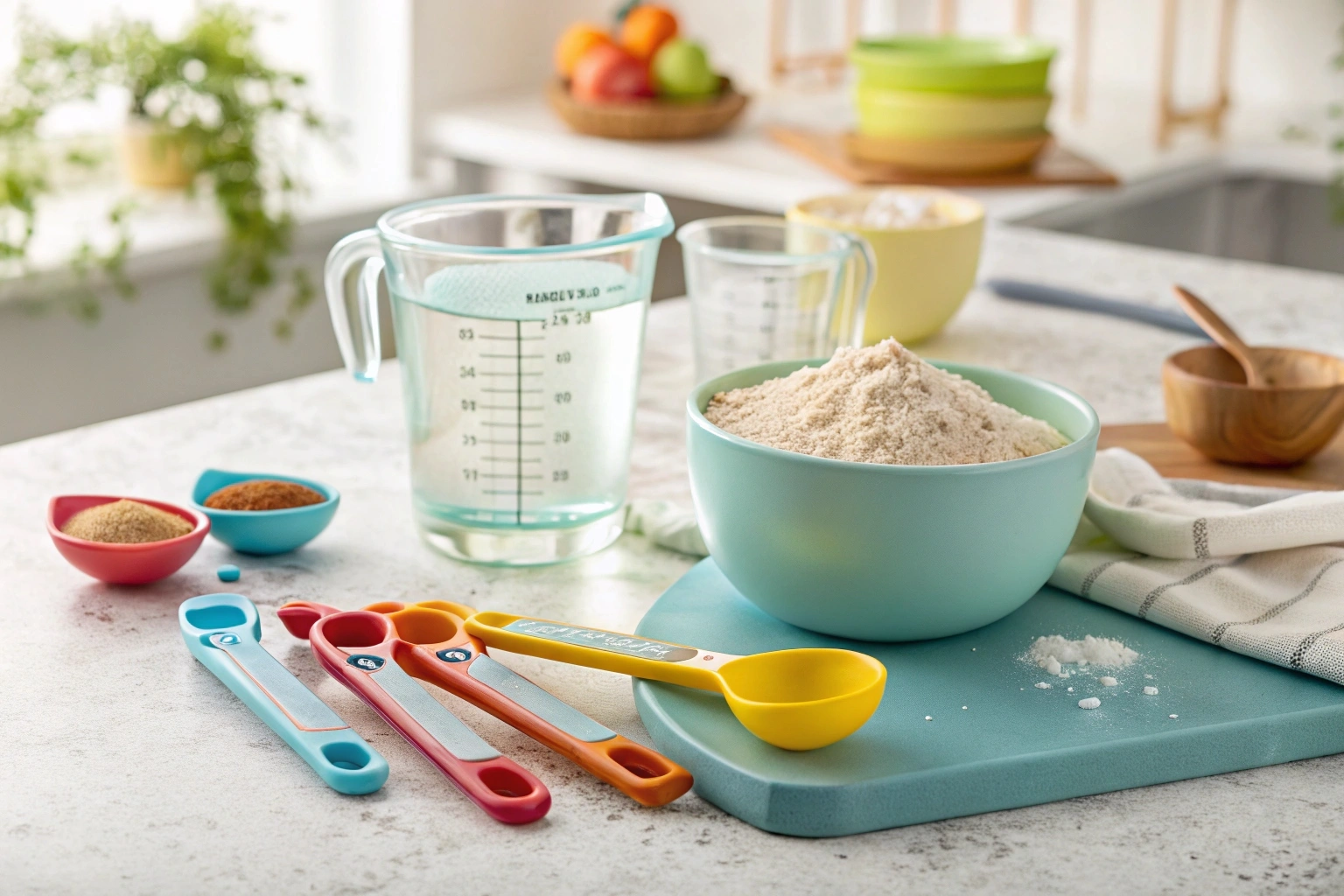Let’s face it conversions like how many teaspoons in an ounce can feel as puzzling as deciphering Grandma’s handwritten recipe cards. But don’t let a little math intimidate you! Whether you’re whipping up a luscious dessert or crafting a flavorful sauce, knowing this simple measurement is a game-changer. Did you know that 1 ounce equals exactly 6 teaspoons? With this guide, you’ll learn not only the conversion but also why it matters for dry vs. liquid ingredients. Say goodbye to the days of guessing and hello to perfectly balanced dishes. From baking to cooking, we’ve got your back because even the tiniest measurements make the biggest difference in flavor!
Understanding the Basics of Ounces and Teaspoons
What Is an Ounce? Exploring Its Importance in Cooking
An ounce is one of the most commonly used units in cooking and baking. But did you know there are two types of ounces fluid ounces for liquids and dry ounces for solids? While they share the same name, they measure very different things. A fluid ounce refers to volume, while a dry ounce measures weight, which is why they aren’t interchangeable in recipes.
In the kitchen, using precise measurements like how many teaspoons in an ounce ensures that your dishes turn out as expected. For instance, when making a vinaigrette, the right balance of oil and vinegar depends on accurate liquid measurements. That’s where understanding ounces becomes invaluable—it’s the difference between a perfectly seasoned dish and one that falls flat.
What Is a Teaspoon? A Small Yet Mighty Unit
A teaspoon may be small, but its impact in the kitchen is huge. It’s a standard unit of measurement for ingredients like spices, baking powder, and even liquids in smaller quantities. When you see “tsp” in a recipe, it’s shorthand for teaspoon, a tool every cook relies on to measure precision amounts.
If you’ve ever wondered, how many teaspoons in an ounce? the answer is straightforward—there are 6 teaspoons in 1 fluid ounce. This simple conversion makes it easy to scale recipes or adjust flavors without guessing. Think of a teaspoon as your secret weapon for ensuring every pinch of salt or splash of vanilla extract is just right.
The Relationship Between Ounces and Teaspoons
When converting ounces to teaspoons, it helps to understand their relationship. A single fluid ounce equals exactly 6 teaspoons. This fixed ratio is a lifesaver when measuring small quantities of liquids like lemon juice for a marinade or soy sauce for a stir-fry.
However, keep in mind that this ratio applies specifically to fluid ounces. For dry ingredients, factors like density and texture come into play. For example, a dry ounce of sugar may measure differently in teaspoons compared to a dry ounce of flour. To avoid missteps, always consider the type of ingredient you’re working with.
For a deeper dive into accurate conversions, this measurement guide from AllRecipes offers helpful tips on getting it right every time.
Why Conversions Differ for Dry and Liquid Ingredients
Conversions between dry and liquid ingredients can be tricky, but they’re crucial for accurate results. Liquids like milk or water have consistent density, so 1 fluid ounce = 6 teaspoons. Dry ingredients, on the other hand, vary significantly in weight and volume.
For instance, how many teaspoons in an ounce of flour? The answer depends on how tightly the flour is packed. In contrast, 1 ounce of granulated sugar, which is denser, will require fewer teaspoons. This is why recipes often specify “packed” or “leveled” measurements to ensure accuracy.
To simplify conversions, consider using a kitchen scale for dry ingredients. It’s a foolproof way to measure precisely, ensuring your cookies turn out chewy and your sauces stay perfectly thick.
How to Convert Ounces to Teaspoons with Confidence
The Exact Formula for Ounces to Teaspoons

Converting measurements in the kitchen doesn’t have to be stressful. For liquids, the formula is straightforward: 1 ounce = 6 teaspoons. Whether you’re mixing salad dressings or crafting a cocktail, this simple rule will save you time and ensure accuracy. For instance, if a recipe calls for 2 ounces of syrup, you’ll know it’s equivalent to 12 teaspoons.
But why is this conversion so important? Precision ensures your recipes taste as intended. A dish can go from balanced to overpowering with even a small mistake, especially in baking or flavor-intensive recipes. Understanding how many teaspoons in an ounce gives you confidence in the kitchen!
Practical Tips for Accurate Measurements

Accurate measurements are key to delicious recipes, but it’s easy to slip up. Here are some tips to avoid common mistakes:
- Use a liquid measuring cup for wet ingredients and a dry measuring spoon for powders or solids.
- Level off the teaspoon with the back of a knife for precise amounts.
- Double-check the unit—fluid ounces and dry ounces measure differently.
If you’re looking for a practical recipe to try this with, check out our guide on 2-Ingredient Banana Bread for an easy way to practice these conversions!
Common Mistakes to Avoid During Measurement
Even experienced cooks can fall into measurement traps. One frequent mistake is not understanding the distinction between fluid ounces and dry ounces. For example, measuring 1 ounce of honey in a dry measuring cup might leave you with more than you intended due to the density of the liquid.
Another error? Eye-balling! While it may seem convenient, guesswork can lead to inconsistencies. Remember, the conversion of how many teaspoons in an ounce only holds true when tools are used correctly.
Quick Reference Conversion Chart
Sometimes, having a handy chart can simplify your cooking process. Here’s an easy-to-follow guide:
| Ounces | Teaspoons | Tablespoons |
|---|---|---|
| 1 | 6 | 2 |
| 2 | 12 | 4 |
| 3 | 18 | 6 |
Bookmark this chart, and you’ll never need to pause mid-recipe to calculate conversions again. By understanding how many teaspoons in an ounce, you’re one step closer to cooking like a pro!
When and Why You’ll Need These Conversions
Perfecting Recipes with Accurate Measurements
Precision is the key to cooking and baking success. Imagine preparing a delicate custard or a creamy sauce where even a slight deviation in measurements can throw off the entire dish. Understanding how many teaspoons in an ounce lets you follow recipes with confidence.
For example, recipes for vinaigrettes or glazes often require a tablespoon or two of liquid, which translates to specific teaspoon measurements. Knowing that 1 ounce equals 6 teaspoons ensures that each dish turns out balanced and flavorful. Accuracy isn’t just for professionals—it’s for anyone aiming to elevate their cooking game.
Adjusting Serving Sizes with Ease
Scaling recipes up or down often involves converting measurements. Whether you’re doubling a recipe to feed a crowd or halving it for a small dinner, understanding conversions like how many teaspoons in an ounce becomes invaluable.
Let’s say you’re doubling a soup recipe that calls for 1 fluid ounce of seasoning. Instead of guessing, you’ll know that means 12 teaspoons making adjustments quick and effortless. By using precise conversions, you avoid the risk of under-seasoning or overpowering the flavors, which is crucial when cooking for a group.
If you’re interested in scaling recipes for two, explore our guide on Easy Dinner Ideas for Two for inspiration.
Making Do Without Measuring Tools
We’ve all been there mid-recipe and no measuring tools in sight. Luckily, knowing how many teaspoons in an ounce allows you to improvise with everyday items.
For example, if a recipe calls for 1 ounce of vanilla extract, you can use a standard teaspoon and measure out exactly 6 teaspoons. Similarly, a tablespoon (which equals 3 teaspoons) can help you convert quickly. While precise tools are best, these simple tricks can keep your cooking on track when tools aren’t available.
Practical Uses in Everyday Cooking
Conversions like how many teaspoons in an ounce aren’t just for special recipes; they’re useful in everyday cooking too. From measuring honey for a morning smoothie to portioning soy sauce for a stir-fry, these conversions simplify your routine.
Consider baking, where measurements are especially unforgiving. A recipe that calls for 3 ounces of sugar translates to 18 teaspoons. Without this conversion knowledge, it’s easy to add too little or too much, leading to inconsistent results. By mastering this skill, you’ll feel more at ease in the kitchen.
Differences Between Fluid Ounces and Dry Ounces
What Are Fluid Ounces?
Fluid ounces measure volume and are commonly used for liquids like water, milk, and oil. If you’ve ever poured juice into a measuring cup, you’ve worked with fluid ounces. When converting how many teaspoons in an ounce, the calculation is straightforward for liquids: 1 fluid ounce equals 6 teaspoons.
This simplicity is one reason why fluid ounces are a go-to measurement in recipes for dressings, syrups, and beverages. By ensuring you use liquid-specific tools, such as clear measuring cups with volume markings, you’ll achieve accurate results every time.
What Are Dry Ounces
Unlike fluid ounces, dry ounces measure weight rather than volume. They’re often used for dry ingredients like sugar, flour, or spices. This difference can create confusion, especially when a recipe calls for “1 ounce” without specifying whether it’s dry or fluid.
For instance, how many teaspoons in an ounce of flour? The answer depends on the ingredient’s density and how it’s measured. A loosely packed teaspoon of flour may differ greatly from a packed one, making a kitchen scale a reliable option for such ingredients.
Why Fluid and Dry Ounces Aren’t Interchangeable
The key distinction between fluid and dry ounces lies in how they measure different properties: volume versus weight. This difference is why you can’t directly swap them in recipes. For example, 1 fluid ounce of milk is equivalent to 6 teaspoons, but 1 dry ounce of sugar might only fill about 4.5 teaspoons, depending on its granule size.
Understanding these differences prevents measurement errors that can alter a dish’s texture and flavor. When in doubt, consult your recipe carefully to see if it specifies the type of ounce required.
Conversion Tools to Simplify Measurements

If you often cook or bake, investing in reliable conversion tools can make your life easier. Measuring spoons, liquid measuring cups, and digital kitchen scales are invaluable for precise cooking. For instance, a scale can help you determine the exact weight of a dry ingredient when you’re unsure how many teaspoons in an ounce.
Additionally, several smartphone apps can provide instant conversions, making it simple to switch between teaspoons, ounces, and even grams. Whether you’re measuring ingredients for a creamy pasta dish or a sweet dessert, these tools ensure accuracy and eliminate guesswork.
Advanced Tips for Kitchen Conversions
Substituting Ingredients Without Compromising Flavor
Cooking isn’t always about following a recipe word for word—it’s about adapting! If you’re out of an ingredient, knowing how many teaspoons in an ounce can help you substitute seamlessly. For instance, if you’re replacing sugar with honey in a recipe, remember that 1 ounce of honey equals 6 teaspoons. Adjusting for the sweetness and liquid content ensures your dish remains balanced.
Similarly, consider swapping oil with melted butter. Both measure similarly in fluid ounces, so understanding these conversions can save you a trip to the store while keeping your dish on track.
Converting Between Metric and Imperial Systems
Navigating between metric and imperial measurements can be tricky, but it’s essential for global recipes. For example, how many teaspoons in an ounce might translate into milliliters for metric users: 1 teaspoon equals approximately 5 milliliters, meaning 1 fluid ounce equals about 30 milliliters.
Let’s say a European dessert recipe calls for 50 milliliters of liquid. By converting to teaspoons (10 teaspoons), you can stick with familiar tools while recreating international flavors. Metric-imperial conversions make it easier to try recipes from around the world!
How to Store Measuring Tools for Longevity
Caring for your kitchen tools ensures they provide accurate measurements for years. Measuring spoons and cups are small but mighty, especially when you need to calculate how many teaspoons in an ounce.
Here are some tips for storing them properly:
- Keep them dry: Avoid leaving tools damp, as moisture can lead to rust or warping.
- Organize by size: Hang measuring spoons on hooks or stack cups neatly to prevent misplacement.
- Clean promptly: Sticky ingredients like honey can leave residue, so wash tools immediately after use.
Proper storage not only keeps your tools functional but also helps you cook with confidence every time.
Recommended Resources for Conversion Accuracy
Even the most seasoned cooks need a little help sometimes. Bookmarking resources or apps for quick conversions can simplify your cooking process. Websites like USDA FoodData Central provide reliable ingredient measurements, while apps like Kitchen Conversion simplify figuring out how many teaspoons in an ounce.
FAQs
How many teaspoons does it take to make 1 oz?
It takes 6 teaspoons to make 1 fluid ounce. This measurement applies to liquid ingredients, such as water, milk, or vanilla extract. For dry ingredients, the number of teaspoons may vary slightly depending on the ingredient’s density. Understanding how many teaspoons in an ounce ensures you measure accurately, whether you’re baking a cake or mixing a marinade.
Does 2 tablespoons equal 1 oz?
Yes, 2 tablespoons equal 1 fluid ounce. Since each tablespoon contains 3 teaspoons, this also means that 1 fluid ounce equals 6 teaspoons. This conversion is especially handy when scaling recipes or substituting measurements with different tools.
How many dry teaspoons are in an oz?
The number of dry teaspoons in an ounce depends on the ingredient’s weight and volume. For instance, 1 dry ounce of sugar may equal about 4.5 teaspoons, while 1 ounce of flour might take up more volume. If you’re unsure, using a kitchen scale can help you determine precise amounts. Remember, when working with liquids, 1 fluid ounce equals 6 teaspoons.
Does 4 teaspoons equal 1 oz?
No, 4 teaspoons do not equal 1 ounce. A fluid ounce is equal to 6 teaspoons, so 4 teaspoons would fall short of a full ounce. This distinction is crucial when measuring ingredients to ensure your recipes turn out just right.
Conclusion
Knowing how many teaspoons in an ounce is a small but essential skill that can elevate your cooking and baking. Whether you’re working with liquid or dry ingredients, understanding the nuances of measurements ensures accuracy and consistency in your dishes.
In this guide, you’ve learned that 1 fluid ounce equals 6 teaspoons, and we’ve explored how this conversion applies to everyday cooking scenarios. From scaling recipes to substituting ingredients, mastering these conversions saves time and guarantees delicious results.
With the tips and charts provided, you can confidently navigate your kitchen, whether you’re making a simple salad dressing or tackling a complex baking project. Keep this guide handy, and remember: precision is the secret ingredient to culinary success!
Now it’s your turn try out these conversions in your next recipe and let us know how it went. For more tips, tricks, and delicious ideas, explore other recipes on our website!

